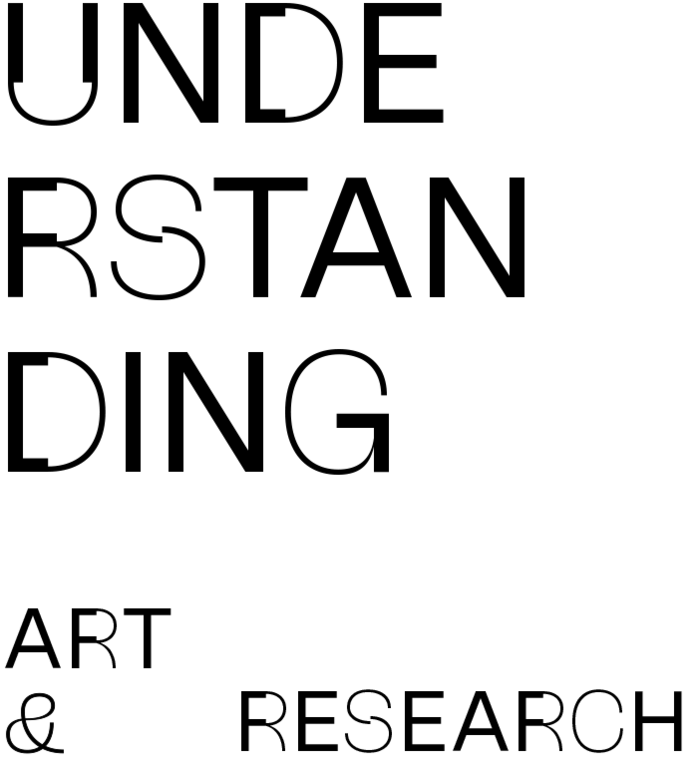Audio-visual project documentation
Exhibition of the University of Applied Arts Vienna
Curated by Gerald Bast, Alexander Damianisch, Barbara Putz-Plecko.
Based on projects with a focal point on artistic research activities, the Angewandte offers an overview of possible positions and illuminates current research perspectives.
The University of Applied Arts Vienna presents exemplary approaches to its artistic research under the title UNDERSTANDING – ART & RESEARCH, which focuses upon understanding as the creative impulse. Through examples from research and teaching, science and art, the transformation of society can be viewed, examined, sensed, discussed and experienced.
Exhibitions:
– Tokyo (November 8 – November 20, 2019), Tokyo University of the Arts at Yuga gallery and Rittaikobo
– Wien (28. Juni — 28. Juli 2019), MAK Wien
– Los Angeles (4. — 27. April 2019), UCLA Art Sci center
– Singapur (19. — 30. November 2018), School of Art, Design and Media (ADM) of Nanyang Technological University Singapore (NTU), ADM Gallery
– Dunedin (12. April — 11. Mai 2018), Dunedin School of Art, Otago Polytechnic, DSA Gallery
Together we understand research without topical limits as a source of vivid examples that can give rise to an inviting milieu of challenge and exchange. A working environment that avoids limitations, and fosters curiosity, and thereby heightens achievement. This understanding flows into all areas of activity, including, of course, science and art, design and architecture. The transformation of society must constantly be considered anew.
Transformation is a process that happens when something changes in content and / or form. This change is important not only for the thing itself, but also for its context. But there is also a third level, the “how”, i. e. how to deal with answering a question. It seems that this is what could be called method. This “how” needs adaptation. All three aspects — the thing, the situation, the how — are challenged in each of the projects presented in this exhibition, and each of them realizes transformation.
The focus of transformation differs from project to project. Sometimes it is the item that changes most; in other cases it is the context that is reconfigured anew; then the methodological “how” doesn’t fit any more, and a new approach is needed. We propose groups using the terms instrumentality, interactivity, materiality and performativity. These groups indicate directions, of course also open to other possibilities of relational significance.
The focus changes accordingly, mapping new territory. The question has to be: What establishes the focus within research? Where is the individual core of our research interest located? Might it be the topic, the personality of the researcher, the circumstances surrounding the project? It is difficult to pin down the elements that define the limits of the overall flow of knowledge. The representation of the projects is endeavored to not only offer their own adequate access through their very form; the spectator is invited to form an individual reflexive impression as well.
It seems as if movement needs some kind of belief, rigour, and / or eagerness, yet also trust and the possibility of an open setup. The first is to be found in the qualifications of the people involved, while the second relates to the institutional background and to the context the actual praxis addresses, within the playground of academia, for example. Or, on another scale, what do you call your activity, or what is it called by others: research or art, science or research? In our case it is art and research, although science plays an important role. The reference systems may help to understand what one wants to do.
The individual projects and how they are presented in this exhibition may help to understand different ways of learning to understand better. Such critical self-reflection is essentiell for our shared work inside our institutional context and beyond, internationally.
It is not up to the curators to tell you where the change, focus and flow are to be found in each of the projects: all three are defined by and define the transformation of understanding, in permanent mutation.
In all projects exhibited, it is possible to trace the effect of transformation as it happens, be it interaction in the process of figuring something out or praxis giving rise to a new use of tools. The projects and documentation presented in this exhibition are rigorous examples for transformation.
On the basis of a core of sample projects involving artistic research activities at the University of Applied Arts Vienna, the exhibition offers an overview of possible positions and illuminates current research perspectives.
Projects (collective aspirations) that explicitly open / direct artistic practice in order to find new ways to understand and recognize specific topics and issues. Four directions of interest can be identified: the goal of questioning and transforming the understanding of instrumentality (I), interactivity (A), materiality (M), and performativity (P). The boundaries of the four fields are open, but it is possible to explain things starting here.
IDEA & CONCEPT
Gerald Bast, Alexander Damianisch, Barbara Putz-Plecko
AUSTRIAN FEDERAL MINISTRY OF EDUCATION, SCIENCE AND RESEARCH
AUSTRIAN RESEARCH PROMOTION AGENCY (FFG)
AUSTRIAN SCIENCE FUND (FWF)
CREATIVE EUROPE PROGRAMME OF THE EUROPEAN UNION
HORIZON 2020 PROGRAMME OF THE EUROPEAN UNION
VIENNA SCIENCE AND TECHNOLOGY FUND (WWTF)
VOLKSWAGENSTIFTUNG
EDITORS & CURATORS
Gerald Bast, Alexander Damianisch, Barbara Putz-Plecko
PROJECT MANAGAGEMENT
Marianna Mondelos
COMMUNICATION & LOGISTICS
Marietta Böning
EXHIBITION & GRAPHIC DESIGN
HammerAlbrecht (Tom Albrecht, Daniel Hammer, Alexandra Varsek)
TYPOGRAPHY
Phase by Elias Hanzer
SCENOGRAPHY & EXHIBITION DESIGN
Wolfgang Fiel, Institute for cultural policy
COPY-EDITING
Christopher Barber, Melanie Sindelar
AUDIO-VISUAL PROJECT DOCUMENTATION
Ethan Vincent
SPECIAL THANKS
Martina Schöggl
This documentation project is jointly supported by Support Art and Research and Zentrum Fokus Forschung (supportkunstundforschung.uni-ak.ac.at and zentrumfokusforschung.uni-ak.ac.at).
